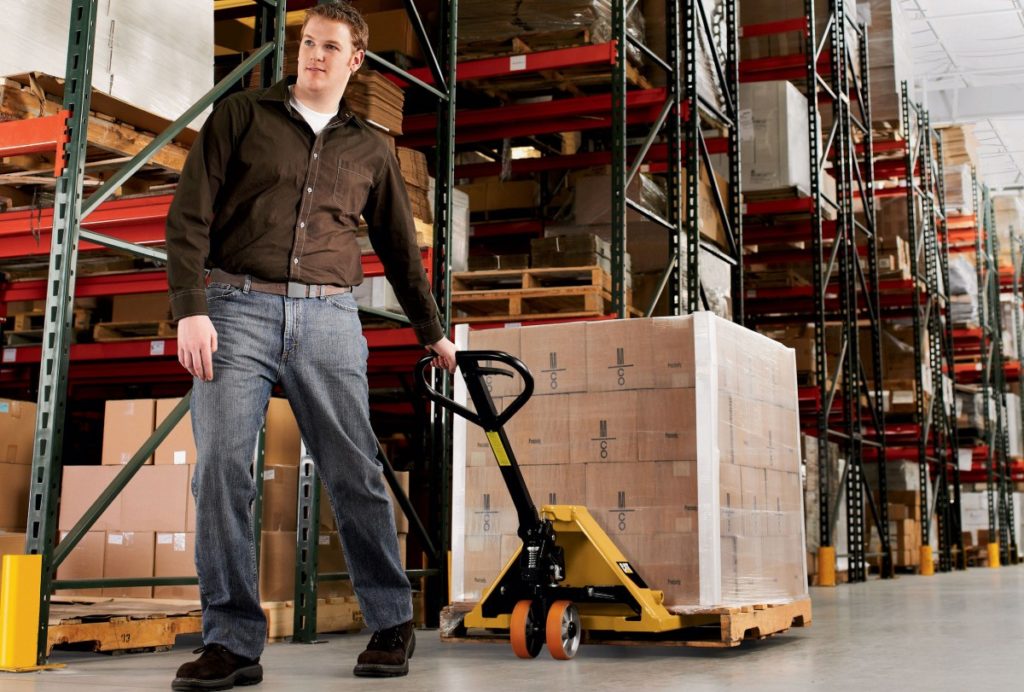Most storage facilities utilise pallets for stacking items. Regardless of their size, these items are stacked, transported and moved around on large, square-shaped wooden trades, which over the years, have become industry standard. The most efficient way to move pallets around is by using pallet trucks. Pallet trucks are present in almost every warehouse and storage room, whether it’s electric, or a manual hand pallet truck.

Manual pallet trucks are hand-powered, and most commonly used in personal warehouse and retail operations. They can carry up to 2.500kgs and they’re most commonly used to carry palletised loads over small distances that don’t need to be lifted high. Manual hand pallet truck models are the most affordable ones, but as aforementioned, they require a fair amount of human effort to transport the pallets, which can be quite tiring.
Electrically powered pallet trucks, on the other hand, are motorised and can move and lift much heavier and stacked loads. Some feature a platform that the operator can stand on while moving the pallets, and these models are ideal for warehouses where there’s an excessive need to move palletised loads of over 2.500kg. Besides warehouses, they’re commonly seen on staging areas and loading docks as well.
However, regardless of what type of pallet truck you decide to go for, there are a few important factors to consider before making a purchase. Namely, you need to consider the length, the capacity, and the weight of the pallet jack.
The length of the pallet truck and its width are the most important things to consider in order to ensure it will be able to successfully carry the pallets that your facility stores. Most pallet truck forks sizes are 27×48 inches, and the most common wood pallet size is 40×48 inches. However, a pallet truck with larger forks isn’t always better, as it can make maneuvering more difficult.
The pallet truck you buy should be capable of carrying the heaviest load you transport on a daily basis. Most of the time, you’ll want a pallet truck that can carry 1.5 times the maximum load, just to be on the safe side. If you place higher loads on the truck than it can carry, you risk causing safety problems, which will lead to broken pallets, equipment downtime, operator injury, and damaged products.
And lastly, consider the weight of the pallet truck itself. When you’re moving around pallets using the truck, you aren’t just moving the weight of the pallets, but the weight of the truck as well. That being said, you need to make sure the total weight is supported by the surfaces you’ll move the pallets through, including vehicle trays and container floors.
























